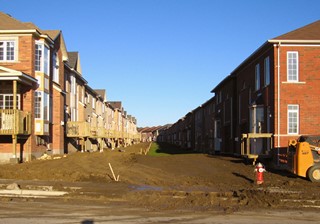Preserving and Restoring Healthy Soil: Best Practices for Urban Construction
 The way in which landscaped portions of urban environments are constructed and managed affects how absorbent they are to stormwater, in addition to the level of effort that will be required to re-establish and maintain healthy vegetation and the lifespan of the plantings. If best practices to preserve or restore healthy functioning soils in these areas are not applied during construction, changes to soil structure, biology and organic matter content and the effects of compaction can cause them to function more like impervious surfaces. This makes the standard practice of directing roof drainage to them (i.e., roof downspout disconnection) less effective than it could be at reducing urban runoff and contaminant loads to receiving waters. Furthermore, poorer quality planting environments are produced that require more irrigation, fertilizer and effort to re-establish and maintain vegetation and urban tree canopy.
The way in which landscaped portions of urban environments are constructed and managed affects how absorbent they are to stormwater, in addition to the level of effort that will be required to re-establish and maintain healthy vegetation and the lifespan of the plantings. If best practices to preserve or restore healthy functioning soils in these areas are not applied during construction, changes to soil structure, biology and organic matter content and the effects of compaction can cause them to function more like impervious surfaces. This makes the standard practice of directing roof drainage to them (i.e., roof downspout disconnection) less effective than it could be at reducing urban runoff and contaminant loads to receiving waters. Furthermore, poorer quality planting environments are produced that require more irrigation, fertilizer and effort to re-establish and maintain vegetation and urban tree canopy.
This guidance document describes recommended best practices and minimum standards for preserving and restoring healthy soil in landscaped areas during urban construction. The document was prepared based on guidance provided in several jurisdictions throughout the United States (e.g., Western Washington, Maryland, Minnesota, Pennsylvania, Virginia, New York) and green building certification system guidelines (e.g., The Sustainable Sites Initiative™) with adaptations to suit an Ontario context. This best practices guide is intended to provide both the rationale and practical guidance needed to improve conventional urban construction soil management practices in Ontario. It is a useful resource to designers and engineers involved in urban and landscape design, government agencies involved in the permitting and inspection of urban construction projects and contractors involved in urban construction and landscaping.
